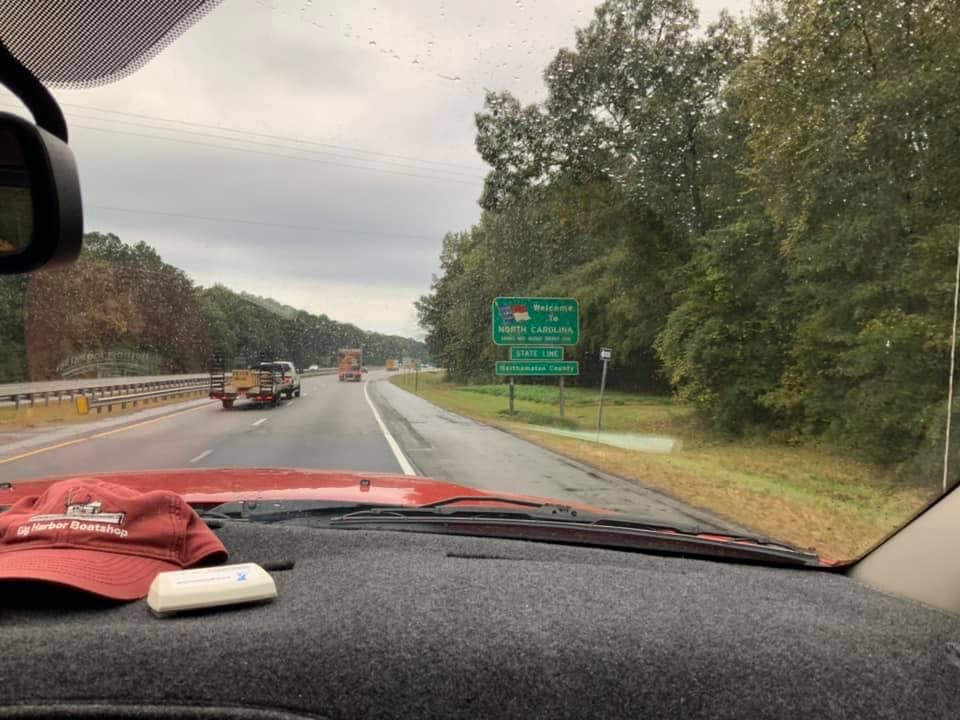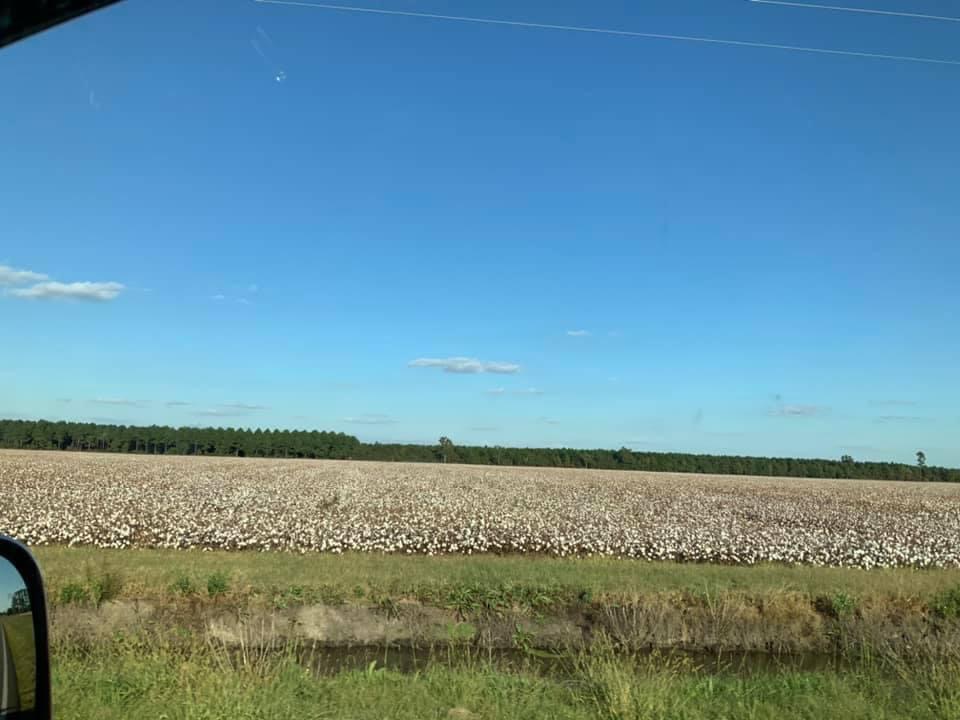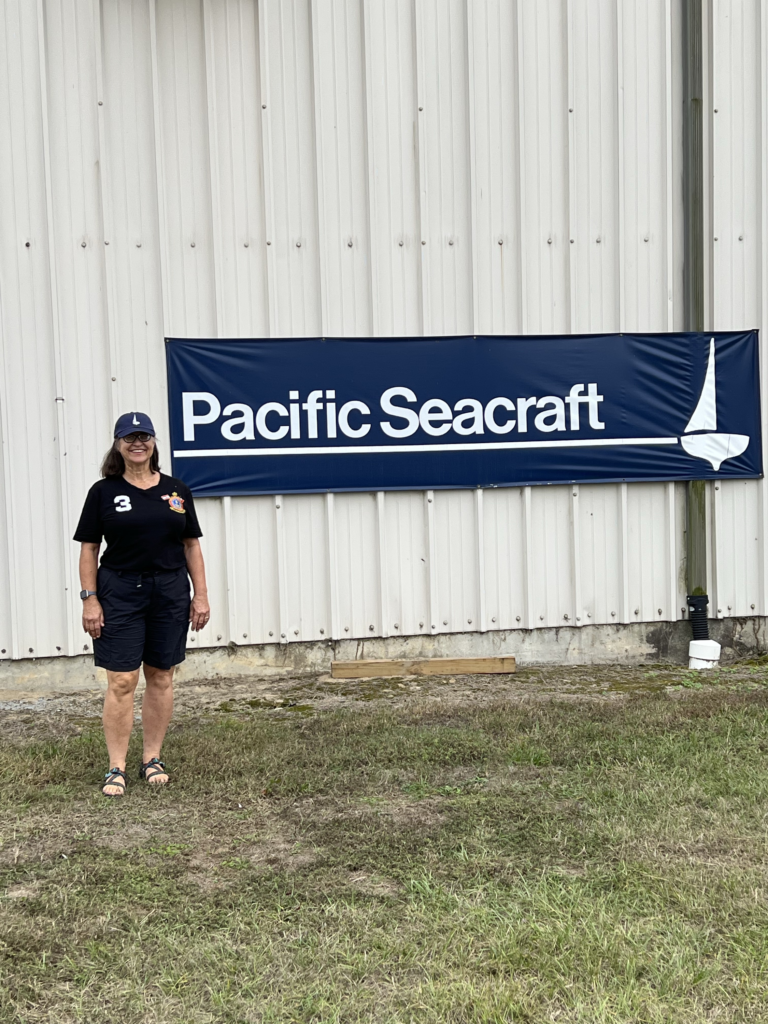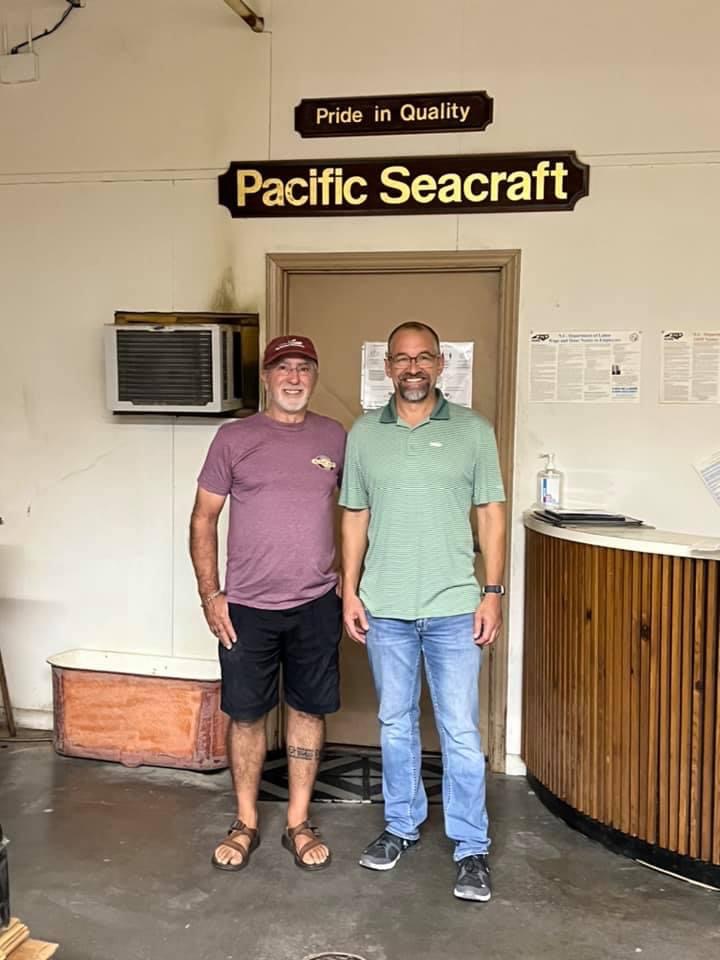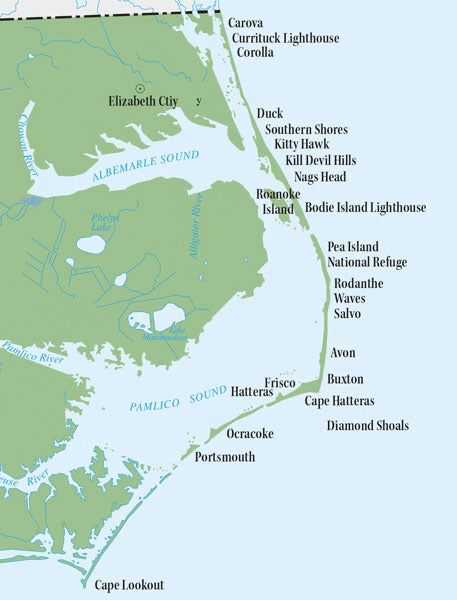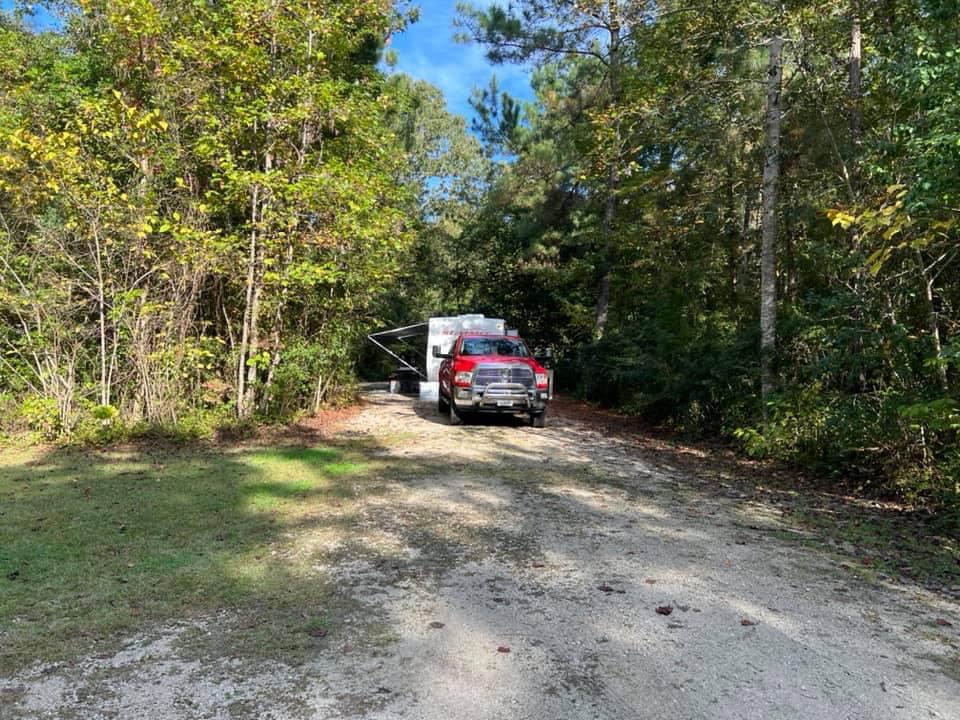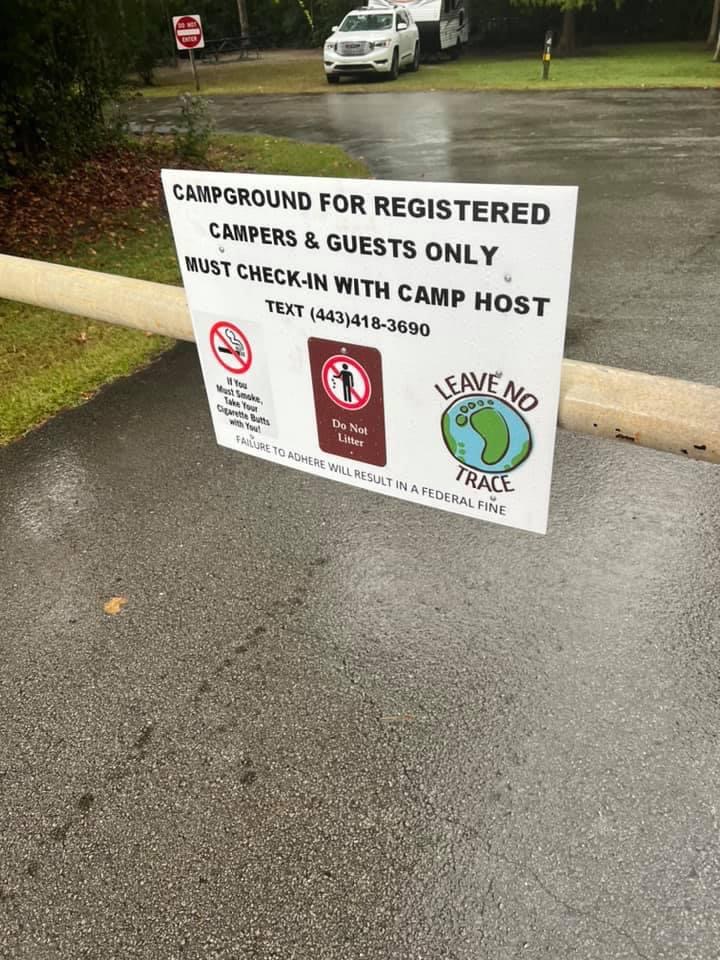IF YOU ARE READING THIS IN AN EMAIL, CLICK ON THE HYPERTEXT TITLE ABOVE TO READ IT IN BIGGER PRINT.
(Note: This blog entry represents a combination of writings and pictures already posted about our Cool Change II, Land Yacht Adventures 2021 through Cindy via Facebook and Rick via email. So for some of you, the following posts may be duplicative, but for others, this is the first time you are seeing them. We are repeating them here to centralize the record and share our experiences more broadly.)
RICK’S POST (with Cindy’s captions in italics):
We were excited to get on the road heading further south from Reston, Virginia. We had just purchased new tires for the land yacht so I was no longer envisioning having a blowout in the Everglades leading to being attacked by alligators or some other worst case scenario. We were getting a late start, driving after having the new tires installed, so we opted for a short drive day.
One of the nationwide businesses that allow overnight parking for RV’s in transit is the Cracker Barrel Restaurant chain. They are in 45 states and they have over 600 locations so chances are there will be one on your route. Though they do not have huge parking areas, most of them set aside a few large and marked spaces to be used by travelers in their RV’s or trailers. They do advise that you call ahead and let them know you are coming and if the RV designated spaces are full, you will have to move on. Other than that, I am sure they just expect that you will patronize their business while you are there.
Cindy found a Cracker Barrel location in Emporia, Virginia, which would be about a four hour drive for us. The manager said that they had 3 spaces and that all were still available when we called. We arrived late afternoon and found that there was only one Class A RV in the lot with a car in tow. The way they had parked, they were using two of the three spaces, but we only needed one so we were set. It was actually a very comfortable place to spend the night as we were parked next to an island that was planted in grass, had a small garbage can, and had a shade tree on it. So we set our chairs out on the lawn and relaxed a bit after the drive.
We got a good night’s sleep and in the morning as soon as they had opened, we went to the restaurant and ordered breakfast. This was the first Cracker Barrel restaurant I had been in and the breakfast choices seemed very southern, but it is probably the same menu they use everywhere. We had a great server, the coffee was good and the food was fine, so we could not have asked for more.
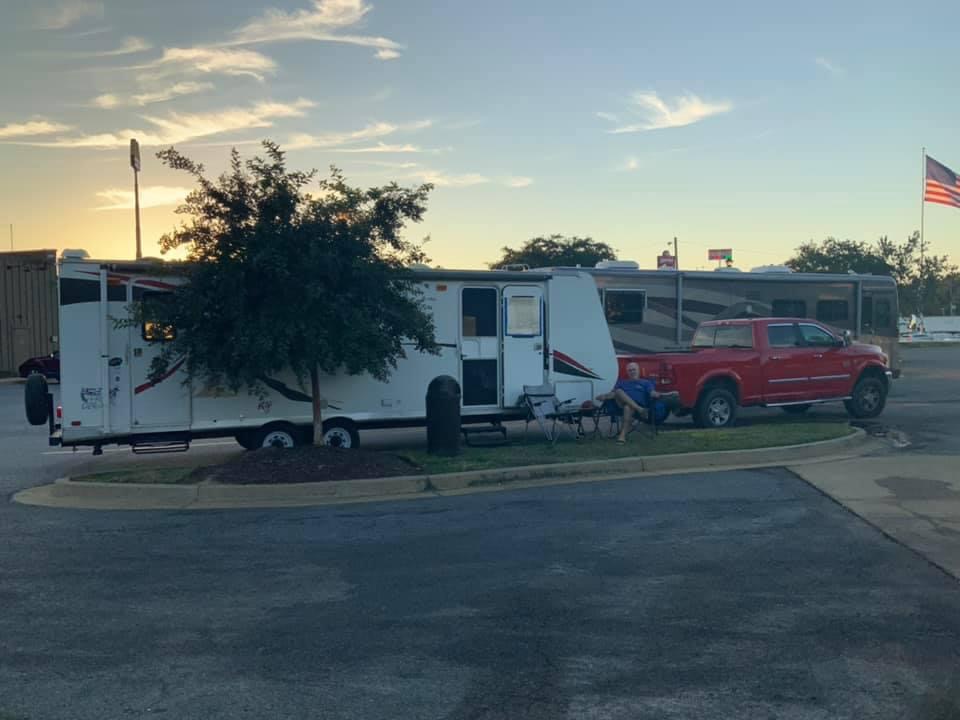
The plan for the day was to drive to Washington, North Carolina, which is home to the manufacturing facility of Pacific Seacraft, the builder of our 1989 cutter rig monohull sailing vessel, Cool Change. I have always wanted to visit them as we have had a lot of contact with them since we bought our boat in February 2011. Often I would send them emails to ask questions relating to the boat’s build or otherwise seeking advice when we were making repairs or upgrades to the boat.
Interestingly, though the company is now located in Washington NC, that has not always been the case. Our boat was built in the company’s original manufacturing location in Long Beach, California. The boats that Pacific Seacraft are most renowned for are the PS31 (our model), the PS34, and the PS37. These boats were all designed by the esteemed Naval Architect, Bill Crealock. Crealock started his education by pooling together some money with some friends in 1948. They bought an old cutter and set out on a mission to study a boat’s behavior at sea. They arrived in the USA after an “unhurried two year journey” in a small sailboat.
In 2007 the Pacific Seacraft Company filed for chapter 11 bankruptcy. The company’s assets, including all of their molds, were purchased at a bankruptcy auction in Portland, Oregon. The purchaser’s name was Steve Brodie with his father, Reid Brodie. Steve moved the whole operation to his home town of Washington, NC along with some of the former employees, and started production there in 2008.
We had contacted Pacific Seacraft a couple weeks ahead of our arrival and asked them if we could tour their facility. The owner Steve wrote us back and graciously approved our request.
It so happened that the day we were going to be arriving was a down day for the plant, so Steve himself would be our guide. On our way to the facility that morning, Cindy received an email from the office manager wanting to confirm the time we would be arriving and said there could possibly be a conflict. We gave her our ETA and she said we should arrive even earlier if possible, as something had come up for Steve.
When we arrived, Steve explained that he would need to be leaving in an hour to take his father to see an orthopedist a result of a fall he had from a ladder a couple days earlier. Regardless, he graciously gave us a full tour of the facility, showing us where each phase of the build process was completed, and with an explanation of how it was done. There was a PS 40 in production. He took us aboard and told us about all the custom build options the purchaser had requested that they were incorporating in the boat.
Pacific Seacraft only builds a few boats per year and their attention to detail and build is a rare commodity. We did not take any photos inside of the facility at Steve’s request or I would have included some here, but seeing all that is involved in the production of one of their boats gave us an even better appreciation of our own Cool Change. She was the 47th boat they built of it’s design. The first PS31 was built in 1987 and a new one can still be ordered today with a build time of about nine months.
Steve showed us several side projects the company was working on, which were various classic boat restorations. He explained they were all owned by friends, and though he had initially declined each proposition, he was eventually coerced into taking on the projects! One was a yacht undergoing a complete refit, whose story was that it was a boat the owner’s late father had owned. It had fallen into a state of disrepair before being brought to the facility, though I am sure it will emerge from there recapturing most of its original glory.
As we were getting ready to leave, Cindy asked Steve if he had any Pacific Seacraft swag like t-shirts or hats we could purchase and he insisted we take both as a present from him. I now have a new favorite ball cap!
We went through downtown Washington, NC and did some exploring before we left the area. Washington is a quaint village that appears to be a tourist destination in itself, with chic restaurants, clothing shops, and walkable streets. Steve had recommended a very cool restaurant where we had lunch before getting on the road. The downtown was right on the water and included a public dock and marina. Even with the size of our rig, it was easy to find a place to safely park while we explored the area.
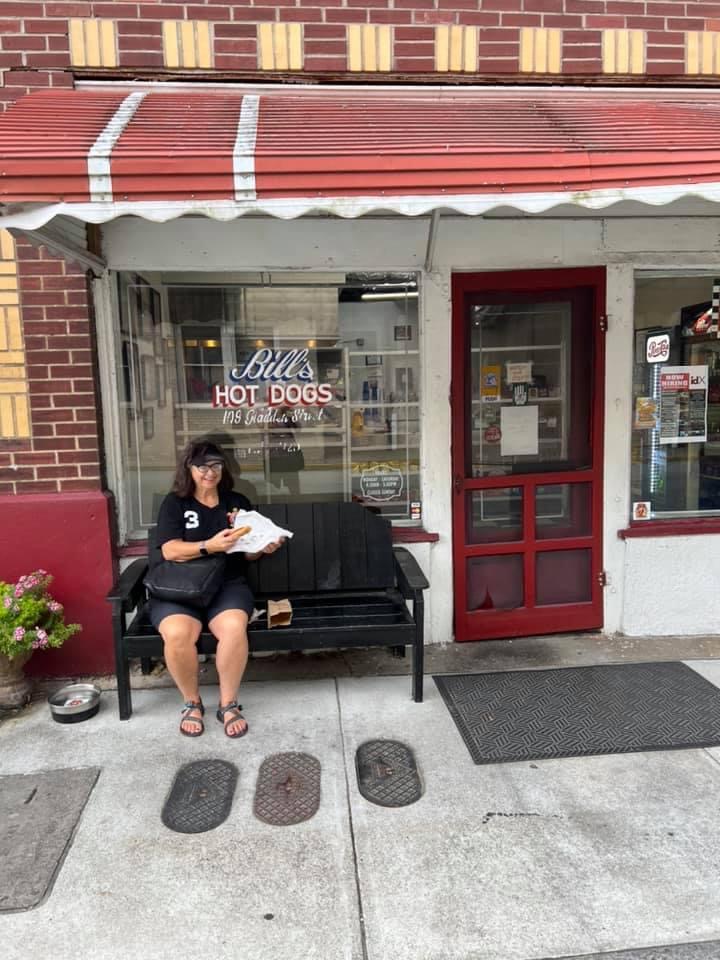
When we left Washington NC, we only had a little over an hour’s drive to the next campground where we would be staying. It is called Flanners Beach Campground on the Neuse river near New Bern, NC. The reason we were headed there was it would be our home base for visiting Ocracoke Island. Ocracoke is part of the Outer Banks chain of barrier islands that run for 175 miles from the Virginia boarder along the coastal area of North Carolina down to Cape Lookout. Parts of the island chain are as far as 30 miles off of the coast. The Outer Banks are also home to the small town of Kitty Hawk. In 1903, the Wright brothers made the first powered airplane flights from Kitty Hawk in the airplane that they had invented and built in 1903.
My sister Chrys’s husband Barry suggested we check out the Outer Banks, as it was one of their favorite vacation destinations. Had we not been pulling the trailer, we could have started in Virginia and traveled the whole length of the island chain with the inclusion of a couple of short ferry hops, staying in Air BnB’s or camping along the way. Instead, we found a campsite to home-base out of and we drove to ferry terminal on Cedar Island where we could get a ferry out to Ocracoke island to explore it. We only planned on going for the day as the island is just 10 sq miles with a population of 700. Most of the population lives in the village of Ocracoke at its southern end, which is also where the ferry arrives and departs from.
We did want to be sure we would have enough time on the island so Cindy booked us on the first morning ferry. The ferry is a vehicle and passenger ferry and we brought our truck over on it. In hindsight, we should have just gone on as passengers and rented a golf cart on the island to get around. That seemed to be the most popular mode of transportation and it would have been much easier than it was to drive the island in the big truck. They rent the golf carts for about $40.00 per day.
To get to the ferry on time, we had to leave the campground very early in the morning. From the campground, It was a 61 mile drive on back roads to the Cedar Island ferry terminal, which would take us about 90 minutes. When we got to the ferry terminal, it was still dark outside and cars were queued up waiting till the ferry started to board.
I got out of the truck for a minute and was attacked by a swarm of some very large and hungry mosquitos. They were horrible! In front of us in line were 4 men in an open air golf cart and they were being traumatized by the beasts and swatting away at them. Just from that momentary opening of the truck door, we were contending with dozens of them now inside the truck. We were doing our best to kill the marauders right up until we got on the ferry. We realized there was actually a campground there where we could have stayed and avoided the long drive but after our experience with the mosquitoes, I am happy we did not do that. It would have been hell and the reviews of the campground said as much.
Once we got onto the ferry and underway, there were no more mosquitos because now we were in wind and on salt water. As soon as we got off the ferry, we headed out of the small town for the beach that the island is renowned for. In 2007 it was rated as the best beach in America and it was not hard to understand why.
The beaches on the Atlantic side of the island stretch along its entire length. The fine white sand and the seclusion of the island make for a magical experience. It is a popular beach for shelling as well as surf fishing. We met a couple there that were set up on the beach in some comfy chairs fishing in the surf. They said they were locals from the mainland and come there often for a few days at a time.
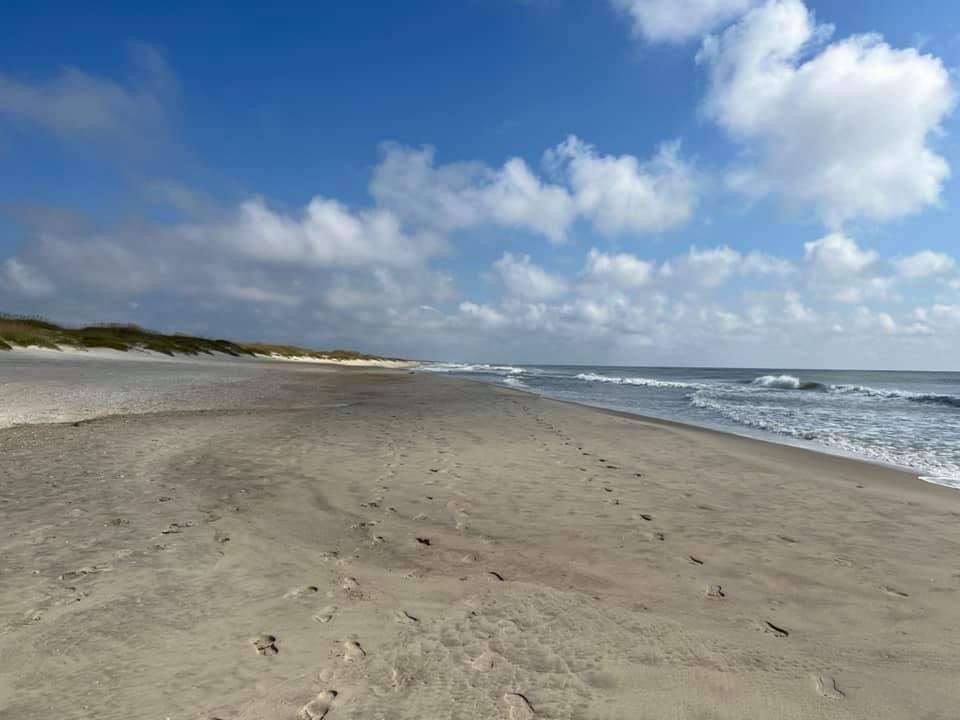
We walked for a couple miles in each direction along the mostly empty beach. Occasionally someone would pass us by jogging or on a bicycle but it really felt as though we had the whole beach to ourselves. When we finished with our exploration, we went for a drive north a few miles to the north on the main road, to a place where a herd of wild horses are corralled by the park service for their own safety. They are called the Ocracoke Wild Ponies and they are said to be original descendants of 16th century Spanish Mustangs.
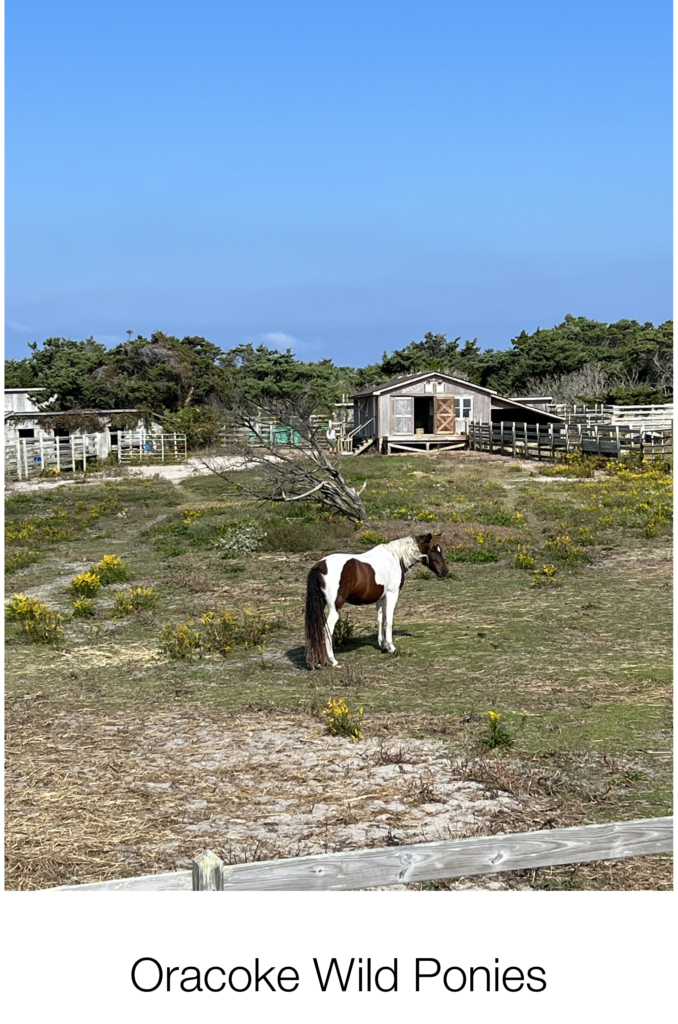
A couple of fun facts about Ocracoke island are that it was once a favorite hangout of Black Beard, the pirate, where he often waited for ships he would then plunder. It was also the place where he was eventually captured and hanged for piracy.
Because the island is so isolated from the mainland, a separate english dialect exists there, which is known as Ocracoke Brogue. It has been the study of North Carolina University linguists and is thought to be one of the closest dialects to authentic 1700’s English.
Many of the residents that live full time on Ocracoke are direct descendants from people who lived there hundreds of years ago and are referred to as “Ocockers.”
We did some exploring around the little village of Ocracoke and we got ready to head back to the mainland. Unfortunately, when Cindy made the reservations for the ferry, she did not make return trip reservations and we found out that the ferry back to the mainland was already fully booked for the rest of its sailings that day!
There was another ferry available, though, which would take us to a less popular destination on the mainland, so we got a ticket to ride that one. The ferry ride would be much longer, as would be the drive home once we had landed. What the heck, it is all a part of the journey! So the drive back home took a couple of hours but the drive, this time in daylight, was beautiful. It took us on two lane country roads through fishing hamlets, farmlands and through several other rural communities.
I had been hearing about Water Moccasin snakes being plentiful in the area and I finally saw one as it was crossing a road we were traveling on that day. It was jet black and I got a glimpse of its open mouth as we drove by, which appeared as a bright white flash. I was happy we had not found him under foot!
The town of New Bern near the campground we were staying in is itself right on the Neuse river that leads out to the Atlantic several miles east of town. We found a great dinner house called Persimmons Waterfront Restaurant there that is located right on the river and has docks around three of its sides. It is a very nice, newer restaurant. It has a good size dining area on two floors inside and a huge outdoor deck on the water, which is where we decided to sit for dinner. The food was excellent but my best memory of the dinner there was the fried green tomato appetizer that we ordered. They have a great assortment of local seafood and a lovely atmosphere.
Our next destination would be Savannah, Georgia. We had 422 miles to go to get to Savannah from New Bern NC. Two hundred miles is an easy day so we split the drive and found a place to spend one night on the way. Cindy found us a Walmart in Dillon, South Carolina that was at the 200 mile point so we headed there. The navigation program we use claimed they allowed overnight stays and that was the case. When we got there we saw the first of many containment ponds we would see as we headed further south. They are constructed to hold runoff after the rains and in some cases to channel the water off to a river or canal leading to the ocean.
CINDY’S POST:
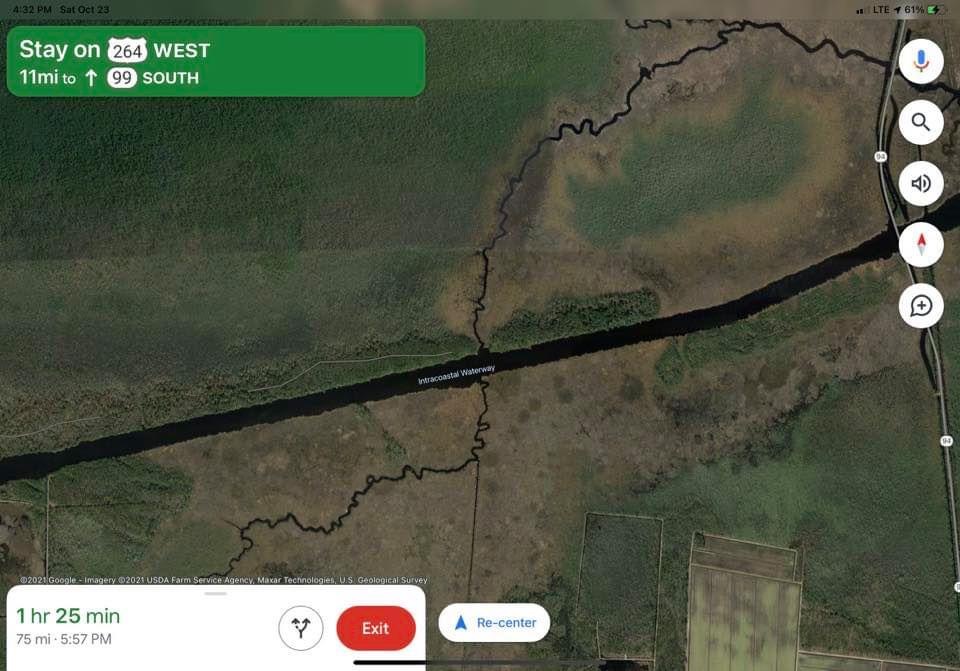
Flanders Beach Campground, a National Park outside of New Bern, North Carolina was very clean, and each spot was nicely secluded and wooded, although beach access to the nearby river was prohibited due to damage from a recent hurricane, they said.. It was a National Park so we got half off – a spot with electricity was only $15/night with our senior lifetime passes. There were also some lovely hikes through the forest surrounding the campground, although I must admit I was a little worried about warnings of poisonous Copperhead snakes on the trail.
However, I had my first unpleasant encounter with a camp host here. Campers beware that many national parks save some of their spots as First Come First Serve (FCFS) at least on some nights of the week. If you are only able to secure reservations online at the federal campground reservation site for a night or two but want to stay longer, you have to first go online to identify which spots are or will become FCFS on the days you want them. Then on the morning of the day you want them, you need to carefully scout out all of those sites. The rules are that you take dibs on the site you want by placing a tag on it the moment the previous occupants leave, but not before, and then put your money in the envelope that accompanied the tag and drop the envelope in the secure box before anyone else has tagged the site. That had been the practice at all of the federal campgrounds we had been to so far. This campground was full the day we arrived (with reservations for only two nights, but we wanted to stay longer) so we were super vigilant about getting a spot when some FCFS spots opened up the third morning. (This is also the reason we couldn’t stay overnight in Ocracoke, because we had to return to claim a new site). Well, at this particular campground, the campground host has decided to take this process a step further and insist that in addition to following this process, you must check in with her before you tag a FCFS site. So I told her Friday that I would be looking for a FCFS site on Sunday morning, and asked if there was anything I should do ahead of time to increase my chances of getting one. She said there would probably be no problem getting one on Sunday, but I should wait and discuss it with her Sunday morning.
Sunday morning came around and she wasn’t at her campsite, and other people were coming in to the campground looking for FCFS sites. So, I tagged an empty site and put a few of our belongings in it to mark it as occupied, and then immediately texted the camp host to tell her I had done that. She then responded to me that I couldn’t have that site because she had promised it to someone else who had asked for it the previous night, even though it wasn’t tagged yet and there was no one in it. I was furious and wrote back to her that it was unfair to make me wait until Sunday morning and then give a site to someone else Saturday night. She chewed me out for not following her orders of contacting her first, but let me stay in the site we selected and reassigned the other campers to a different site. So, campers beware, some National Forest camp hosts take it upon themselves to stretch the federal guidelines so they have more control over who gets what spot, and you can be a victim of their control issues if you are not careful, or worse, loose out on a campsite to which you were entitled and have to move on even if you wanted to stay longer.
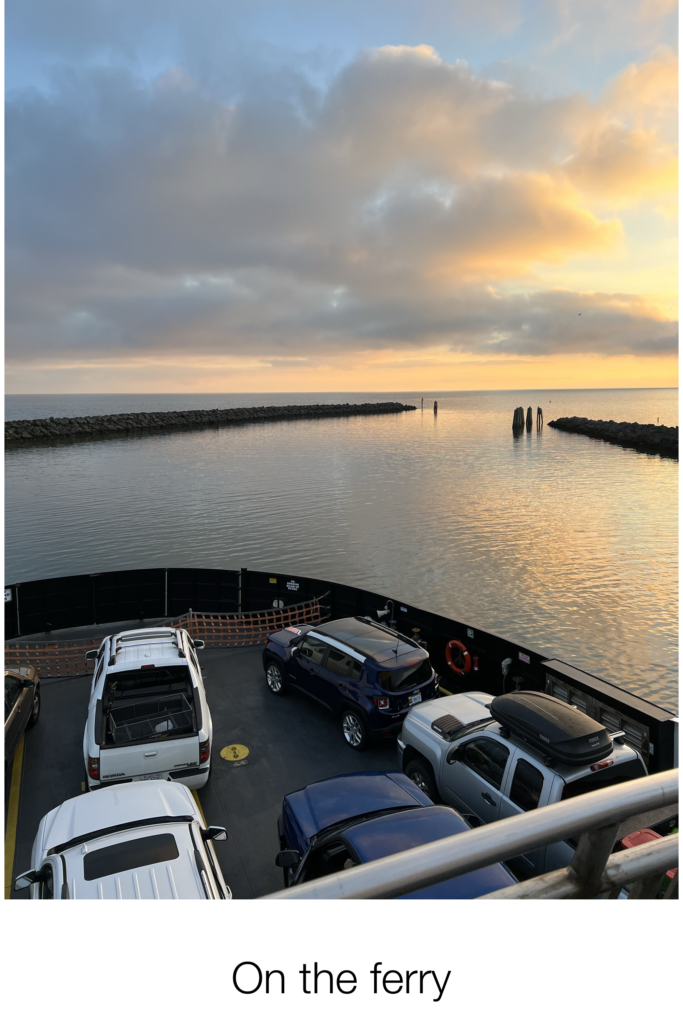
HOW NOT TO GO TO OCRACOKE:
You know, for five months on a daily basis, I had been researching routes, places to go and things to do; coordinating with other people’s schedules; and making reservations for campgrounds, buses, flights and events all across the country. I guess it was time I made a mistake.
Ocracoke Island is the southernmost island in the chain of barrier islands off the coast of North Carolina called the Outer Banks. Our brother in law Barry and our kids all raved about the beautiful beaches here, and they really are beautiful. The sand was very fine grain white with no rocks or seaweed, the beach was wide and flat, and a row of pretty shells rimmed the shoreline. You could walk on the beach for miles. The day we visited, the weather was in the low 70’s with a slight breeze and party cloudy; that was perfect weather for a beach walk and we loved it.
However, to get there you must ride a ferry. You can either drive 200 miles from the northernmost barrier island near Virginia Beach and then take a frequent ferry from Hatteras Island for an hour south to Ocracoke, or you can take a 2.5 hour or 3.5 hour ferry from the southern mainland coast of North Carolina. We were much closer to the southern mainland coast, so we opted for the closest ferry, an hour away. There were only three ferries daily from that location to Ocracoke Island, and only three back. I was able to secure reservations to Ocracoke on the early morning ferry only two days before we were going, but I didn’t make reservations back at that time because I wasn’t sure if we would try to spend the night on the island or not – it depended on whether we could secure three nights at the mainland campground upon arrival, which as it turned out, we couldn’t. Anyway, I made reservations for taking the truck on the ferry to the island because the island is long and I knew we would want to explore it.
Approaching the island on the ferry, I realized I hadn’t made reservations for our return yet, so I got on line to make reservations and discovered they wouldn’t let me make same day reservations. So I went to the ticket office when we got off the ferry, and they said that all the ferries for the return trip were completely booked for the next two days! OMG! How were we going to get back? We had to move our trailer the next morning! Well, after much ado, we managed to get tickets on a ferry returning to the mainland at a different place than we had departed from, which was an hour longer ferry, and the drive home was an hour longer too. So our drive to and from the ferries totaled 3 hours and our rides on the ferries totaled 6 hours, all for just a 3 hour visit to the island. Oops!
I learned later that ferry reservations were generally easy to make to get to the island; the difficulty was getting back, especially on the weekend. I also learned that for $45, just $15 more than the ferry cost us round trip, we could have rented a little golf cart that would have gotten us around the island nicely without the need for our truck. As walk-ons, we could have gotten on any ferry we wanted to. So, the next time I make a reservation for a ferry to an island, I will make sure the return trip is booked simultaneously, and I will explore alternate island transportation options to avoid bringing a vehicle if possible. Lessons learned.

